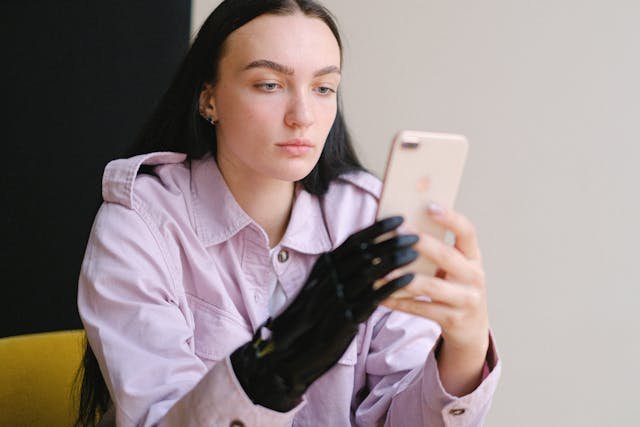Smart prosthetics are evolving rapidly, integrating artificial intelligence, real-time motion tracking, and sensory feedback to create more natural and intuitive movement for amputees. However, one of the biggest challenges remains: seamless, ultra-fast communication between the prosthetic limb and the brain, cloud servers, and other smart devices. This is where 6G connectivity is expected to make a groundbreaking difference.
As the successor to 5G, 6G promises faster speeds, near-zero latency, and advanced AI-driven networking capabilities. By 2030, 6G networks will enable prosthetic limbs to process and transmit data instantly, improving response time, accuracy, and real-time adaptability. This will allow for more natural movement, better sensory feedback, and cloud-powered AI assistance that continuously refines prosthetic performance.
At Robobionics, we are always looking toward the future of prosthetic innovation, ensuring that next-generation connectivity like 6G is leveraged to enhance mobility, independence, and quality of life for amputees. In this article, we explore how 6G will transform smart prosthetics, making them faster, smarter, and more connected than ever before.
1. How 6G Will Enable Instantaneous Prosthetic Control

One of the biggest hurdles in prosthetic technology is latency—the delay between a user’s command and the prosthetic limb’s response. Even the most advanced AI-powered prosthetic limbs today experience tiny response delays, which can make movements feel slightly unnatural or robotic.
6G, with its expected terahertz (THz) frequencies and sub-millisecond latency, will make prosthetic response times virtually instantaneous. This means that when an amputee thinks about moving their prosthetic hand, the limb will respond immediately, just like a natural limb would. The speed of neural signal processing and AI-driven motion analysis will be significantly enhanced, ensuring faster and more precise reactions to user intent.
By 2030, ultra-low latency 6G networks will allow prosthetic limbs to function as true extensions of the body, eliminating response lag and enhancing the overall user experience. This advancement will make smart prosthetics feel more natural, improving mobility, coordination, and confidence in everyday activities.
2. Real-Time AI Optimization for Smarter Prosthetics
Today’s smart prosthetics rely on machine learning and AI algorithms to improve movement patterns, grip strength, and adaptability. However, current AI processing is limited by on-device computing power, which can slow down real-time adjustments. 6G will solve this problem by enabling instant cloud-based AI processing, allowing prosthetic limbs to continuously learn and improve from real-world use.
With 6G-enabled cloud connectivity, prosthetic limbs will be able to access powerful AI models hosted on remote servers, refining motion accuracy, pressure sensitivity, and gait mechanics in real time. If a user struggles with balance or grip force, the prosthetic limb can receive instant AI-driven adjustments, ensuring a smoother, more efficient experience.
By 2030, AI-driven prosthetics will no longer be limited by onboard computing power. Instead, they will operate as intelligent, adaptive devices that learn from user movements, environmental conditions, and external feedback—making prosthetic control effortless and more personalized.
3. 6G-Enabled Haptic Feedback: Restoring the Sense of Touch
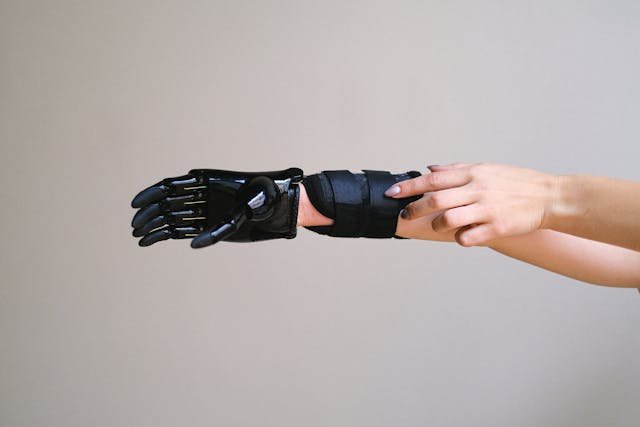
One of the most exciting advancements in prosthetic technology is haptic feedback—the ability for artificial limbs to simulate the sensation of touch. While modern prosthetics can detect grip force and some pressure levels, the transmission of detailed touch data to the brain is still slow and limited.
6G networks will revolutionize haptic feedback by enabling real-time, high-bandwidth data exchange between prosthetic sensors and the brain. This means that when an amputee touches an object with their prosthetic hand, they will instantly feel the texture, temperature, and firmness, just like a natural limb.
By 2030, 6G-powered haptic prosthetics will offer amputees a near-natural sense of touch, allowing them to feel surfaces, sense environmental changes, and engage in delicate tasks like holding fragile objects or distinguishing between different materials. This advancement will significantly improve daily life, work efficiency, and overall sensory interaction for prosthetic users.
4. Cloud-Connected Prosthetic Networks for Remote Monitoring and Updates
Currently, prosthetic limbs require manual adjustments and periodic recalibration, often requiring clinic visits or technician intervention. This can be time-consuming and frustrating for users who rely on their prosthetics for daily mobility.
With 6G-enabled cloud networking, prosthetic devices will become self-updating and remotely monitored, reducing the need for frequent in-person adjustments. Doctors and prosthetists will be able to track prosthetic performance, detect malfunctions, and send software updates wirelessly, ensuring that users always have the latest advancements in prosthetic technology.
By 2030, prosthetic limbs will be part of an interconnected smart healthcare ecosystem, allowing for automatic updates, real-time performance monitoring, and predictive maintenance. This will reduce downtime, improve durability, and ensure that prosthetic users always experience peak functionality.
5. Advanced Brain-Machine Interfaces Powered by 6G
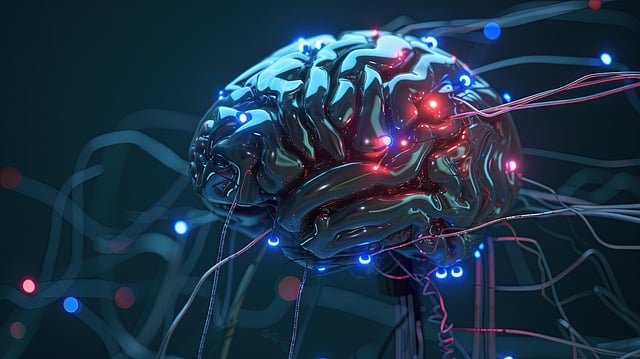
Brain-machine interfaces (BMIs) are becoming a key innovation in prosthetic control, allowing amputees to move artificial limbs directly with their thoughts. However, current BMI systems face signal processing delays and occasional misinterpretations of neural commands.
6G will revolutionize brain-controlled prosthetics by providing higher bandwidth for neural data transmission, ultra-fast processing, and improved signal accuracy. This means that prosthetic limbs will interpret brain signals more precisely, allowing for smoother, more intuitive movement without lag or confusion.
By 2030, BCIs combined with 6G connectivity will make brain-controlled prosthetic limbs function as naturally as biological ones, enabling fluid motion, real-time adaptability, and near-instantaneous thought-to-movement execution.
6. How 6G Will Improve Prosthetic Collaboration with Smart Devices
The future of prosthetics is not just about movement—it’s about seamless integration with the digital world. Today, prosthetic users must manually interact with smartphones, tablets, and smart home systems, but 6G will change this by enabling direct, wireless interaction between prosthetics and IoT devices.
With 6G connectivity, prosthetic limbs will sync effortlessly with smart homes, workspaces, and vehicles, allowing users to control lights, appliances, and even computers using simple gestures or thought-based commands. This will provide greater independence and accessibility, making everyday tasks faster, easier, and more intuitive.
By 2030, prosthetic limbs will function as fully integrated smart devices, allowing users to connect to digital environments, operate electronics with thought commands, and interact with virtual assistants—all in real time.
7. 6G and Edge Computing: Faster Processing for Smarter Prosthetics

One of the key advancements that 6G will bring to prosthetic functionality is edge computing—a system that processes data closer to the user instead of relying on distant cloud servers. This will be especially important for prosthetic limbs that require split-second decision-making, such as when navigating uneven terrain or adjusting grip strength dynamically.
With 6G-enabled edge computing, prosthetic limbs will be able to process movement commands, sensory feedback, and AI-driven adjustments instantly, without the lag associated with cloud-based computing. This means that even in areas with weak internet connections, users will still experience seamless, real-time prosthetic control.
By **2030, edge computing combined with 6G will ensure that smart prosthetics are faster, more reliable, and independent of external processing limitations. This will make prosthetic movement smoother and more natural, reducing the risk of delays or misinterpreted commands.
8. The Role of 6G in Enhancing Prosthetic Durability and Power Efficiency
One major challenge in smart prosthetic development is power consumption. Today’s advanced prosthetic limbs require frequent recharging, especially those equipped with AI-powered control systems, haptic feedback, and real-time connectivity. 6G will introduce energy-efficient communication protocols that will significantly extend battery life.
With 6G’s ultra-low power networking, prosthetic limbs will be able to transmit and receive data without draining excessive energy. This will allow longer-lasting prosthetic performance, reducing downtime for recharging. Additionally, new energy-harvesting techniques, such as wireless power transfer and kinetic energy generation, will allow prosthetics to partially self-charge during movement.
By 2030, prosthetic users will experience a significant improvement in power efficiency, allowing them to use their smart limbs for longer periods without worrying about battery depletion. This will make high-tech prosthetics more practical and convenient for everyday use.
9. 6G and Multi-Prosthetic Synchronization for Enhanced Mobility
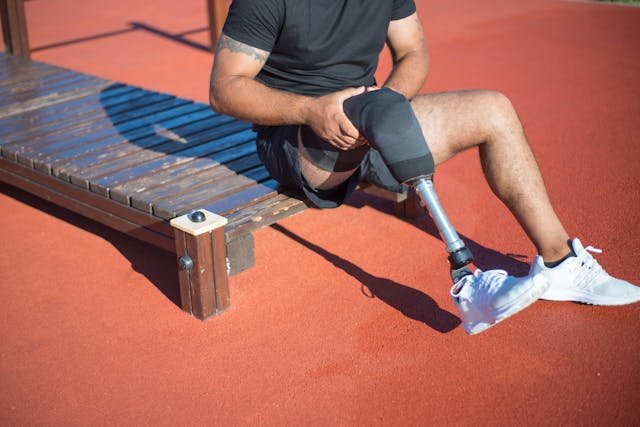
For amputees who use multiple prosthetic limbs, such as bilateral arm or leg prosthetics, coordination between both limbs is crucial. Currently, prosthetic limbs function independently, which can sometimes result in asymmetrical movement or imprecise coordination.
With 6G’s ultra-fast connectivity, multiple prosthetic limbs will be able to communicate with each other instantly, ensuring perfect synchronization. This means that for users with two prosthetic legs, walking patterns will be automatically adjusted to maintain balance and reduce strain on the body. Similarly, for users with two prosthetic arms, grip force and movement coordination will be optimized in real time.
By 2030, multi-prosthetic synchronization powered by 6G will ensure that prosthetic users experience seamless, natural movement, making daily activities, sports, and rehabilitation exercises significantly easier and more effective.
10. The Role of 6G in Prosthetic-Telemedicine Integration
Telemedicine has transformed healthcare, allowing patients to consult doctors remotely, track health data, and receive real-time medical support. However, prosthetic users often require frequent check-ups for adjustments, calibration, and maintenance, which can be inconvenient if clinics are far away.
With 6G-enabled smart prosthetics, real-time health monitoring will become the standard, allowing prosthetists to remotely track limb performance, detect malfunctions, and make adjustments via cloud-based interfaces. Additionally, telemedicine platforms will use 6G to stream high-resolution diagnostics, enabling specialists to remotely diagnose and fine-tune prosthetics without requiring in-person visits.
By 2030, 6G-powered prosthetic telemedicine will drastically reduce the need for physical clinic visits, ensuring that users receive instant support, remote troubleshooting, and on-demand prosthetic updates from anywhere in the world.
11. 6G and the Future of AR/VR-Based Prosthetic Training
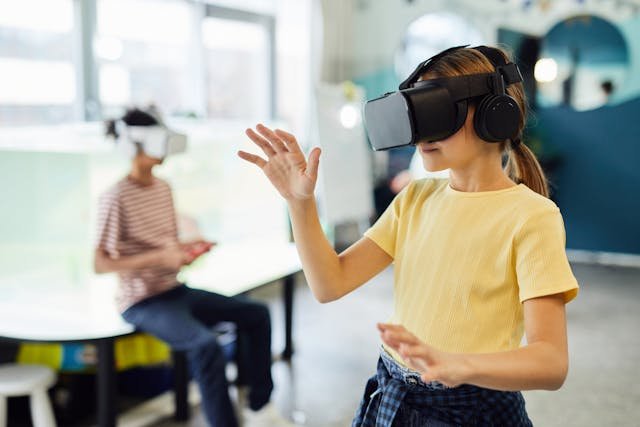
Learning to use a smart prosthetic limb requires training and adaptation, as users must develop new muscle memory and coordination. Augmented Reality (AR) and Virtual Reality (VR) have already begun playing a role in rehabilitation and prosthetic training, allowing users to practice limb control in a virtual environment before using their prosthetics in real life.
With 6G’s high-speed, ultra-low-latency connectivity, AR/VR prosthetic training will become fully immersive and interactive, providing real-time feedback on limb control, balance, and grip precision. Users will be able to simulate daily activities, sports, and complex movements, ensuring that they are fully comfortable with their prosthetic limbs before real-world application.
By 2030, 6G-powered AR/VR rehabilitation programs will be widely available, allowing prosthetic users to train effectively from the comfort of their homes, improving confidence and reducing the learning curve associated with new prosthetic devices.
12. 6G and Secure Data Transmission for Prosthetic Privacy
With prosthetic limbs becoming more connected to the cloud, AI, and brain-machine interfaces, concerns about data security and privacy are growing. Users generate sensitive biometric and neural data, which could be vulnerable to hacking or unauthorized access if not properly secured.
6G will introduce quantum encryption and advanced cybersecurity measures, ensuring that all prosthetic data is safely transmitted and stored without risk of interception. Additionally, secure blockchain-based identity verification will prevent unauthorized access to prosthetic settings and user profiles.
By 2030, smart prosthetics will be fully protected by 6G’s next-generation security protocols, ensuring that user data remains private and secure, giving amputees complete control over their prosthetic limb settings and personal information.
13. 6G and AI-Driven Emotion Recognition in Prosthetic Limbs

Future prosthetics won’t just respond to physical movement commands—they will also react to emotional states. AI-powered sensors, combined with 6G connectivity, will allow prosthetics to adjust movement patterns based on the user’s emotional state.
For example, if a user is stressed or fatigued, the prosthetic limb could automatically reduce grip strength, slow down movements, or shift to a more relaxed posture. Similarly, if a user is feeling energetic, the limb could increase responsiveness and flexibility, allowing for more dynamic interactions.
By 2030, 6G-powered emotional recognition in prosthetics will make artificial limbs feel even more human-like, creating a more natural, personalized experience that adapts to the user’s mental and physical state.
Final Thoughts: The Future of 6G-Connected Prosthetic Limbs
6G connectivity will be a game-changer for smart prosthetics, enhancing real-time responsiveness, AI-driven adaptation, and haptic feedback. By providing ultra-fast data processing, cloud-based updates, and seamless integration with smart systems, 6G will make prosthetic limbs smarter, faster, and more intuitive than ever before.
By 2030, amputees will experience a level of prosthetic functionality that was once considered impossible. Movements will feel instantaneous, touch sensations will be fully restored, and AI-powered adjustments will happen in real time. This next-generation connectivity will make prosthetics an integrated, intelligent part of the human body, enabling unprecedented levels of control, adaptability, and independence.
At Robobionics, we are dedicated to ensuring that our prosthetic users benefit from the latest advancements in AI, connectivity, and sensory technology. If you want to explore how 6G will redefine prosthetic mobility, book a free demo with Robobionics today and step into the future of seamless, intelligent prosthetic functionality!



